Extreme Dog Grooming: Decadent or De rigueur-The Experts Speak on Bark and Swagger
Everything’s gone extreme, from sports and vacations to the weather. So it’s no surprise that extreme dog grooming has become one of the newest trends gaining popularity around the world. There are competitions for it; runway shows celebrating it. When I see a dog who’s been sculpted or dyed, I can appreciate it as a piece of art, but I wonder if it bothers the pup or is unhealthy for it. So I decided to find out from the experts. I approached celebrity groomer, Jorge Bendersky, who judged the first modern creative grooming competition called “Creative Runway,” and prominent emergency medicine veterinarian, Dr. Justine Lee, to get the scoop on this controversial trend. Extreme dog grooming: decadent or de rigueur? Let’s find out.
How Did This Happen?
Creative grooming, or the first grooming competition for it, was introduced by professional groomer Jerry Schinberg in 1980, 34 years ago! He founded the All American Grooming Show and is credited with being the “father” of creative grooming. It all started when he asked groomers to come up with something different for one of his shows and a groomer came back with geometric cuts in the dog’s fur. And that was the extent of it back then. Now, the sky’s the limit with entire artistic canvases sculpted on the dog, utilizing embellishments like tattoos, feathers, crystals and beads. Award-winning extreme groomers are viewed as artists in their own right.
Who Would Do Something Like This & Why??
Actually, different types of people will temporarily dye with Pet Paint or temp tattoo their dogs. There’s the obvious and cute costumes around Halloween. But, more and more, everyday folks are asking their groomers to give Fido blue ears or Fifi pink paws with that bandana or bow, going the extra mile to turn out a fashionable pup. Add a cute temp tattoo on their ear or rump, or a cluster of bright feathers or crystals and Fifi is ready for her fifteen minutes.
People who like fashion and attention will be more likely to go for extreme grooming. Celebrity groomer, Jorge Bendersky, has his own take on the kind he feels belongs on the street. “When it comes to extreme color, I admire it as an art, but I don’t
practice it or encourage a pet owner to have it,” he explains. “It’s like seeing a Victoria Secret model with those huge wings. It looks fabulous on the runway, but it doesn’t mean you can ride the 6 train with them.” That Jorge is witty, and I know what he means. He suggests, “You can get inspiration from something like that. Let’s say you see a dog painted with a bunch of roses. You can take that and put a little rose on your dog’s hip and you’re good to go.”
For runway dogs the equivalent of those Victoria Secret models? “These dogs are being groomed with safety precautions, but they also use tons of hairspray that needs to be washed out after the show is over,” Jorge emphasizes. “You shouldn’t be doing that on your dog in an everyday situation.”
It’s also not for every dog. “Dogs have their own personality,” describes Bendersky. “You have some that like to be couch potatoes and some that like to be show-off little stars. So, if you have a little shy dog, you might want to avoid having people stopping him on the street taking his picture. It could be too intimidating. For dogs that love attention, it’s fabulous!” Jorge adds, “I call it training for beauty. It has to be a dog and an owner that have that in their genes. Like your own little Honey Boo Boo.” Right!
But, Is It Safe?
While extreme grooming isn’t for everyone or for every dog, the good news is, for those who have it done, the result doesn’t embarrass them at all. “Dogs have no interest in cosmetic superficialities, so it doesn’t bother them mentally or emotionally,” explained DVM, Dr. Justine Lee. “But, you have to check the ingredients and make sure with your vet or animal poison control that it’s safe.”
 “The most important things to know is that there is a lot more to know than just what looks good,” Bullet Brown, president of the National Association of Professional Creative Groomers, emphasizes. “Canine skin is nowhere near the same as human skin. Products are not magic, it’s called science. Groomers need to know the anatomy of canine and feline skin, and know how products will work with the skin. That is our biggest concern. We want to help groomers use the products and get good results, but they need to know the science. No groom on the face of the earth is worth sacrificing a dogs safety.” We agree!
“The most important things to know is that there is a lot more to know than just what looks good,” Bullet Brown, president of the National Association of Professional Creative Groomers, emphasizes. “Canine skin is nowhere near the same as human skin. Products are not magic, it’s called science. Groomers need to know the anatomy of canine and feline skin, and know how products will work with the skin. That is our biggest concern. We want to help groomers use the products and get good results, but they need to know the science. No groom on the face of the earth is worth sacrificing a dogs safety.” We agree!
And that takes us to even more extremes. “I’ve had a handful of owners ask me about ear piercing,” explains Dr. Lee. “Something like that would be traumatic and painful for the dog. They don’t understand it, they would scratch and constantly try to get that out.”
There’s even a guy who had his Pitbull tattooed for real, something I just can’t fathom. And neither can Dr. Lee. “In general, unless it’s for medical reasons, such as greyhounds who are tattooed for indentification, we generally do not recommend it,” Dr. Lee emphasized. “It’s very painful. Dogs should be under medication or anesthesia for something like this. And, with the advent of the microchip, there’s really no medical reason to tattoo anymore.” Certainly not for fashion.
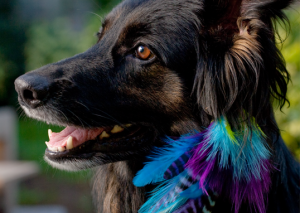 But, even for temporary, cosmetic tattoos, using non-toxic materials, there could be some side effects. “Some pets can develop a rare side effect, just like humans, from even natural chemicals,” explains Dr. Lee. “For instance, Caucasian humans are much more sensitive to developing reactions to the brown henna plant, not the black henna plant. Pets can be the same way. There’s no guarantee it won’t affect your pet.” So, be cautious, she says. Keep an eye on your dog after the first and second application of extreme grooming product. “If the dog’s had it done before, and hasn’t had a reaction the second time using it, it should be fine,” she assures. “The body needs time to build up antibodies, where you’ll see an allergic response. It’s the same with humans. So carefully monitor them the first and second time.”
But, even for temporary, cosmetic tattoos, using non-toxic materials, there could be some side effects. “Some pets can develop a rare side effect, just like humans, from even natural chemicals,” explains Dr. Lee. “For instance, Caucasian humans are much more sensitive to developing reactions to the brown henna plant, not the black henna plant. Pets can be the same way. There’s no guarantee it won’t affect your pet.” So, be cautious, she says. Keep an eye on your dog after the first and second application of extreme grooming product. “If the dog’s had it done before, and hasn’t had a reaction the second time using it, it should be fine,” she assures. “The body needs time to build up antibodies, where you’ll see an allergic response. It’s the same with humans. So carefully monitor them the first and second time.”
What would you look for to see if your dog is having a reaction? “In general, dogs don’t go into anaphylactic shock the way humans do,” emphasized Dr. Lee. “They develop a different type of anaphylaxsis. They get hives, a swollen muzzle or swollen face. But, their airways rarely close. So, watch for hives, redness of the skin, any kind of itchiness. Best place to look is on the belly or at the site of where the substance was applied.”
What do you do if you see your dog is having a reaction to any extreme grooming product? Get it off right away. But, what you take it off with is very important. “That’s a mistake some people will make,” Dr. Lee cautions. “They’ll use a strong chemical to get the paint or tattoo off, which can create it’s own adverse reaction. Use a mild dish soap, like Dawn, Palmolive or Joy. If you can’t use one of these, go straight to a vet.”
One of the biggest gray areas is the regulation of these products. Apparently, there isn’t any. “NAPCG [National Association of Professional Creative Groomers] was developed 4 years ago to educate,” explains Bullet Brown. “The grooming industry is unregulated. Human hair stylists can’t work without a specialized education.” Jorge Bendersky agrees. “That is a problem,” he says. “Companies are not required to list ingredients for shampoos and other products. However, most products being used for temporary extreme grooming are products you’d find in the kid’s aisle of the supermarket. So, as a rule of thumb, if a face paint or glue isn’t toxic for a 3 year old, it’s not going to be toxic for a dog.”
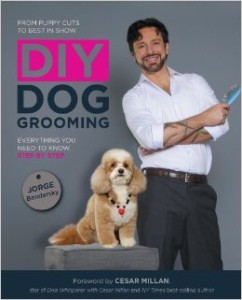 As responsible pet owners, if you want to use an extreme grooming product, the company by law is required to provide what’s called an MSDF (Materials Safety Data Form), which will list all of the product’s ingredients. Or you can call the company and ask.
As responsible pet owners, if you want to use an extreme grooming product, the company by law is required to provide what’s called an MSDF (Materials Safety Data Form), which will list all of the product’s ingredients. Or you can call the company and ask.
If you’re a DIY groomer, Dr. Lee says to use caution. You can also check out Jorge’s upcoming book, DIY Dog Grooming, From Puppy Cuts to Best in Show: Everything You Need to Know, Step by Step, out March 1, and available by pre-order from Amazon now. In it, Jorge helps the dog owner with every aspect of grooming, including how to apply temporary glitter tattoos and more. I will be reviewing Jorge’s book just prior to its release.
Hope this has given you some food for thought and helped educate you a bit more on extreme grooming. I know I learned a lot. Sophie isn’t the extreme grooming type. She’s barely the grooming type, the little scruff ball! So, while I don’t think I’ll be pulling out the pet paint or temporary tattoos, I’m not going to judge others, if that’s their thing. Just practice safety first for our little ones.
What do you think about extreme grooming? Tell me by commenting below.
Until next time…
(Disclosure: If you choose to purchase any of the suggested items in this post, I will receive a small compensation from the company, which goes towards keeping Bark and Swagger up and running and towards the monthly donations I make to animal rights and rescue organizations. Thank you for helping out!)


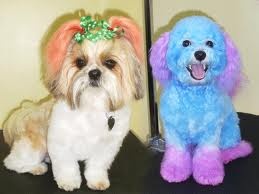
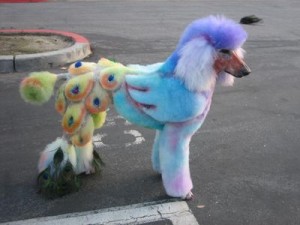

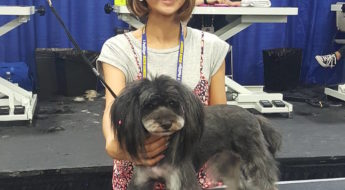
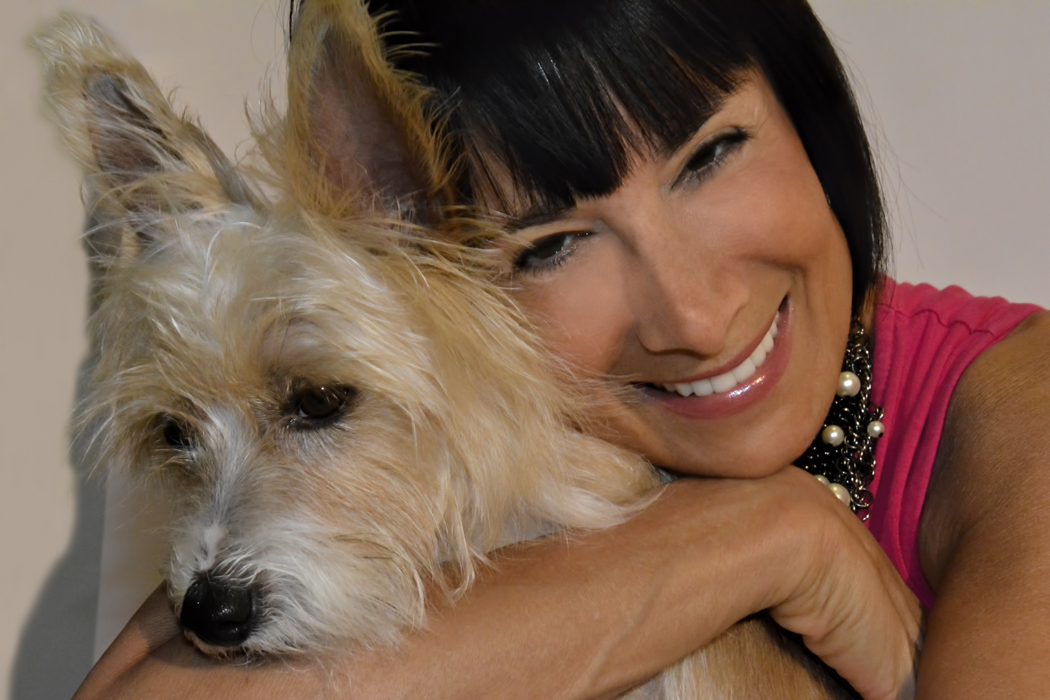

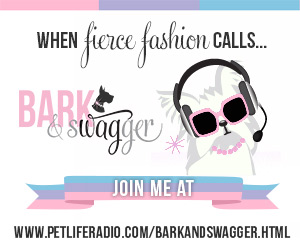
Very fun article Jody! Thanks for shedding (ha) light on this issue – So happy you’re a member of Women in the Pet Industry! So many creative pet peeps there!
Haha…very funny, Shawna! Glad you enjoyed the piece and thanks for commenting. Love to hear from people. And love being a part of WIPIN. You are doing an amazing job!
I agree – Lucas isn’t the extreme grooming type either, but as long as safety is practiced …why not?
I do think the tattoo on the butt is cute though !
It is, isn’t it? Jorge said when I told him Sophie wasn’t the type and was skittish and all, “Sophie sounds like maybe she’s an intellectual, a nerdy type you can just put a pair of specs on and that’ll be that.” I didn’t have the heart to out Sophie as not being an intellectual, either, poor girl! She’s just sweet and likes to play; ’nuff said! LOL. Send a pic of Lucas. Look forward to meeting him!